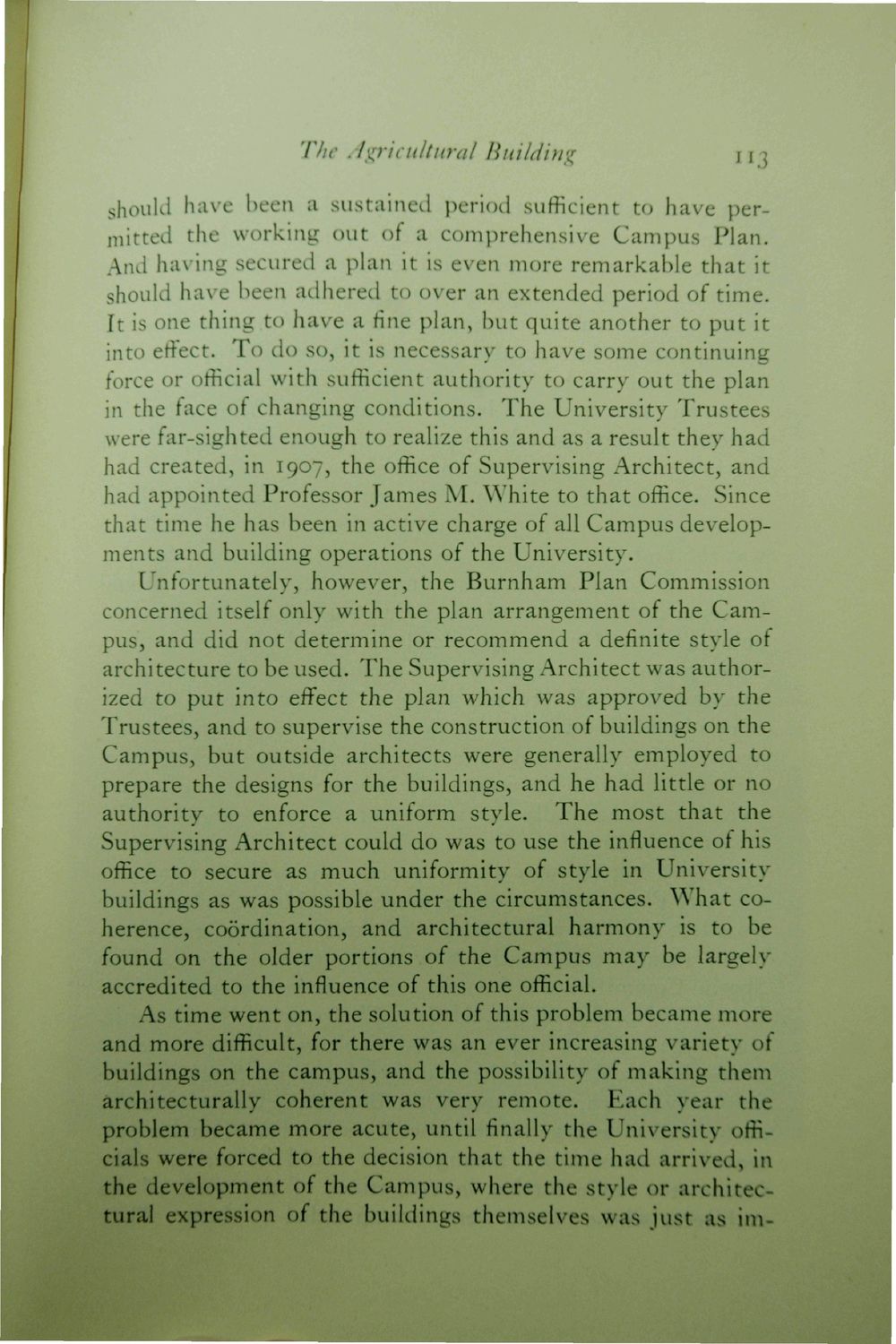| |
| |
Caption: Book - 30 Year Master Plan (Tilton & O'Donnell)
This is a reduced-resolution page image for fast online browsing.

EXTRACTED TEXT FROM PAGE:
The Agricultural Building 113 should have been a sustained period sufficient to have permitted the working out of a comprehensive Campus Plan. And having secured a plan it is even more remarkable that it should have been adhered to over an extended period of time. It is one thing to have a fine plan, but quite another to put it into effect. To do so, it is necessary to have some continuing force or official with sufficient authority to carry out the plan in the face of changing conditions. The University Trustees were far-sighted enough to realize this and as a result they had had created, in 1907, the office of Supervising Architect, and had appointed Professor James M. White to that office. Since that time he has been in active charge of all Campus developments and building operations of the University. Unfortunately, however, the Burnham Plan Commission concerned itself only with the plan arrangement of the Campus, and did not determine or recommend a definite style of architecture to be used. The Supervising Architect was authorized to put into effect the plan which was approved by the Trustees, and to supervise the construction of buildings on the Campus, but outside architects were generally employed to prepare the designs for the buildings, and he had little or no authority to enforce a uniform style. The most that the Supervising Architect could do was to use the influence of his office to secure as much uniformity of style in University buildings as was possible under the circumstances. What coherence, coordination, and architectural harmony is to be found on the older portions of the Campus may be largely accredited to the influence of this one official. As time went on, the solution of this problem became more and more difficult, for there was an ever increasing variety of buildings on the campus, and the possibility of making them architecturally coherent was very remote. Each year the problem became more acute, until finally the University officials were forced to the decision that the time had arrived, in the development of the Campus, where the style or architectural expression of the buildings themselves was just as im-
| |